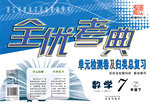
Throughout history, people have been interested in knowing how languages first began, but no one knows exactly where or how this happened. However, we do know a lot about languages, the languages of today and also the languages of earlier times. There are probably about 3,000 languages in the world today. Chinese is the language with the most speakers. English, Russian and Spanish are also spoken by many millions of people. On the other hand, some languages in the world have less than one hundred speakers.
There are several important families of languages in the world. For example, most of the languages of Europe are in one large family called Indo-European. The original (最初的) language of this family was spoken about 4,500 years ago. Many of the present day languages of Europe and India are modern forms of the language of 4,500 yeas ago.
Languages are always changing. The English of today is very different from the English of 500 years ago. In time some even died out completely. About 1,000 years ago, English was a little-known relative of German spoken on one of the borders of Europe.
If a language has a large number of speakers or if it is very old, there may be differences in the way it is spoken in different areas. That is, the language may have several dialects. Chinese is a good example of dialect differences. Chinese has been spoken for thousands of years by many millions of speakers. The differences between the dialects of Chinese are so great that speakers of Chinese from some parts of China can’t understand speakers from other parts.
1. The first paragraph mainly tells us that ____ .
A. most people in the world speak Chinese
B. there are thousands of languages in the world today
C. man has much knowledge about languages
D. some people know several languages
2.According to the passage, most European and Indian languages ____ .
A. will soon die out completely B. were once a relative of English
C. are no longer spoken D. come from the same family
3. According to the passage, ____ has the most speakers.
A. Chinese B. English C. Spanish D. German
4.According to the passage, ____ seems to have changed a lot.
A. German B. English C. Spanish D. Chinese
5.The underlined word dialect in the last paragraph probably means ____ .
A. a special language spoken by Chinese
B. the sign used by the Chinese people in a special area
C. the difference between the old and today’s Chinese
D. the form of a language used in one part of the country
 全优考典单元检测卷及归类总复习系列答案
全优考典单元检测卷及归类总复习系列答案 品学双优卷系列答案
品学双优卷系列答案 小学期末冲刺100分系列答案
小学期末冲刺100分系列答案科目:高中英语 来源:2013届宁夏银川一中高三第一次月考英语试卷(带解析) 题型:阅读理解
When Frida Kahlo's paintings were on show in London, a poet described her paintings as “ a ribbon (丝带)around a bomb”. Such comments seem to suggest Kahlo had a big influence on the art world of her time. Sadly, she is actually a much bigger name today than she was during her time.
Born in 1907 in a village near Mexico City , Kahlo suffered from polio(小儿麻痹症)at the age of seven. Her spine (脊柱)become bent as she grew older. Then, in 1925, her back was broken in several places in a school-bus accident. Throughout the rest of her life, the artist had many operations, but nothing was able to cure the terrible pain in her back. However, the accident had an unexpected side effect. While lying in her bed recovering, Kahlo taught herself to paint.
In 1929, she got married to Diego Rivera, another famous Mexican artist. Rivera’s strong influences on Kahlo’s style can be seen in her early works, but her later works from the 1940s, known today as her best works, show less influence from her husband.
Unfortunately, her works did not attract much attention in the 1930s and1940s, even in her home country. Her first one-woman show in Mexico was not held until 1953.For more than a decade after her death in 1954, Kahlo’s works remained largely unnoticed by the world, but in the 1970s her works began to gain international fame at last.
【小题1】What does the phrase “a much bigger name” in paragraph 1 most nearly mean?
| A.a far better artist |
| B.a far more gifted artist |
| C.a much stronger person |
| D.a much more famous person |
| A.polio |
| B.back injuries |
| C.the operations she had |
| D.her bent spine |
| A.1950s | B. 1930s | C.1940s | D.1970s |
| A.Devotion | B.Sympathy | C.Worry | D.Encouragement |
查看答案和解析>>
科目:高中英语 来源:2011届河南省卫辉市第一中学高三一月月考英语试题 题型:阅读理解
Driving in a foreign country is always different in at least some ways from driving in your own country. Here are some general points regarding driving in New Zealand.
l Visitors wishing to drive in New Zealand do not require an international driver’s license but are required to carry their local driver’s licens e whenever driving.
e whenever driving.
l Vehicles drive on the left-hand side of the road as they do in Britain, Australia, and Japan. Most rental vehicles will have a sticker reminding you of this important fact.
l When the traffic light is red, you must stop. There is no left turn rule as in North America.
l New Zealand road rules follow international standards but please note that in New Zealand vehicles turning left must give way to traffic turning right.
l In general, if you are turning left (where there are give-way signs or no signs), give way to vehicles that not turning. In all other situations, give way to vehicles crossing or coming from your right.
l Seat belts must be worn at all times while driving in New Zealand. This stands for the driver and passengers. The driver is responsible for ensuring all passengers are wearing their seatbelts.
l Do not drink alcohol before driving in New Zealand—drinking and driving laws are strictly enforced.
l Speed limits are in kilometres per hour (kph), not miles per hour (mph).
Speed conversion: 1 kph equals 0.621 mph; 1 mph equals 1.61 kph.
l The speed limit on the open road is 100km/h. In towns and cities the speed limit is 50km/h. Be sure to obey all school crossing speed reductions as speed cameras operate regularly throughout New Zealand.
For further information and up to date road conditions visit: http://www.transit.govt.nz
【小题1】What can be learned from the passage?
| A.A passenger’s not wearing the seat belt has little to do with the driver. |
| B.There will be a reminder for drivers to remember to drive on the left side. |
| C.Cars passing a school in towns should drive at a speed of less than 31 mph. |
| D.A foreign driver is expected to have a driving license issued by New Zealand. |
 |
| A.a travel brochure for locals |
| B.a website travel introduction |
| C.an advertisement of travel |
| D.a travel column in a geographical magazine |
查看答案和解析>>
科目:高中英语 来源:2010~2011学年度福建省龙岩市高三第一次教学质量检查一级达标英语试卷 题型:阅读理解

The King's School, Canterbury is an independent, co-educational secondary school. There are currently 791 pupils on the school roll(名单). The School has a long and distinguished history, and it is also one of the oldest charities in the country, providing scholarships to pupils and organizing a Charity of the Term.
The curriculum(课程)at King’s is based on strong academic roots. It emphasizes and relies upon what is best in traditional independent school education: scholarly excellence supported by a caring and tutorial system, and a wide-ranging co-curricular programme. However, it is continually adapting and reacting to the changing demands of modern education: new subjects are added, new teaching techniques adopted, and there is an increasing awareness of the need to provide programmes of study that match individual needs and skills.
The curriculum is divided into three units: the Lower School (Year 9), an introductory year; the Middle School (Years 10 and 11), working to GCSEs; and the Sixth Form ( Years 12 and 13), taking AS and A levels.
Full details can be found in: Shell Guide and Handbook; Middle School Academic Guide 2009-11; Middle School Academic Guide 2010-12; Sixth Form Guide 2009-11 and Sixth Form Guide 2010-12.
Formal and structured educational support, for those who need it, is available at all levels. The well-stocked Library is open 7 days and 6 evenings per week. ICT facilities (including the Internet) are available for all and the whole school (studies within the Houses as well as classrooms) is extensively networked.
Pupils are offered extensive careers advice throughout their time at King’s. Almost all go to university, either immediately or following a GAP year. The most popular university destinations are Cambridge, Bristol, Nottingham, Durham, Leeds, Oxford, Edinburgh, Manchester, and University College, London.
Director of Studies: Geoff Cocksworth: grc@kings-school.co.uk
Examinations Officer: Elaine McDowell: eam@kings-school.co.uk
【小题1】The passage serves as a brief introduction to __________.
| A.the King's School | B.the curriculum |
| C.the teaching plan | D.British education |
| A.The King's School, Canterbury is a famous high school in Britain. |
| B.The curriculum at King’sis best in traditional and modern education. |
| C.All pupils of the school go to university immediately after they graduate. |
| D.pupils’ dormitories as well as classrooms are provided with network |
| A.The King's School focuses on pupils’ individual development |
| B.pupils in the King's School who pass GCSEs will go to university |
| C.pupils in the King's School have an easy access to the school library |
| D.pupils in the King's School receive good education |
| A.handbook | B.website | C.guide | D.teaching plan |
查看答案和解析>>
科目:高中英语 来源:2011-2012学年山西省忻州一中高二下学期期中考试英语试卷(带解析) 题型:阅读理解
Many facts suggest that children are overweight and the situation is getting worse, according to the doctors. I feel there are a number of reasons for this.
Some people blame the fact that we are surrounded by shops selling unhealthy, fatty foods, such as fried chicken and ice cream, at low prices. This has turned out a whole generation of grown-ups who seldom cook a meal for themselves. If there were fewer of these restaurants, then probably children would buy less take-away food.
There is another argument that blames parents for allowing their children to become overweight. I agree with this, because good eating habits begin early in life, long before children start to visit fast food shops. If children are given fried chicken and chocolate rather than healthy food, or are always allowed to choose what they eat, they will go for sweet and salty foods every time, and this will carry on throughout their lives.
There is a third reason for this situation. Children these days take very little exercise. They do not walk to school. When they get home, they sit in front of the television or their computers and play computer games. Not only is this an unhealthy pastime(消遣), it also gives them time to eat more unhealthy food.What they need is to go outside and play active games or sports.
The above are the main reasons for this problem, and therefore we have to encourage young people to be more active, as well as steering them away from fast food shops and bad eating habits.
【小题1】According to the text, what kind of children may eat more unhealthy food?
| A.Those who often take exercise. |
| B.Those who often watch television. |
| C.Those who often have meals at home. |
| D.Those who often walk to school. |
| A.their parents often cook meals for them |
| B.they are too busy to go out and play |
| C.they can' t choose what to eat |
| D.there are too many fast food shops around |
| A.forcing | B.guiding | C.driving | D.moving |
| A.tell a story | B.provide facts | C.give advice | D.compare opinions |
查看答案和解析>>
科目:高中英语 来源:2012-2013学年辽宁省沈阳二中高二12月月考英语试卷(带解析) 题型:阅读理解
Often we take for granted the many household items we use every day. It is difficult to imagine there was a time in the past when these inventions did not exist. Actually, several of the most common inventions have been with us for quite some time. Inventions like toothbrush, contact lenses(隐形眼镜), and credit cards came into use long ago.
The first toothbrush was introduced in China in the late 1400s but it was only 300 years later that this simple tool came into common use in Europe. By the nineteenth century, a variety of paste and powder cleaners were available throughout Europe as dental(牙齿的) care became more widespread. The first tube of toothpaste hit the market in Great Britain in 1891.
There is evidence to show that the first contact lenses were actually suggested by an astronomer, Sir John Herschel, in 1827. However, SirJohn Herschel was never able to create a working model of his idea. It was not until 1887 that a Swiss doctor from Zurich, Dr. Eugen Frick, came up with a workable process for producing precision (精密)lenses. Dr. Frick designed a new method for producing contact lenses,and the Zeiss factory in Germany began to produce contact lenses.
Credit cards have also been available for many years. They have been in use in the United States since the 1920s. At first, these cards were only used to buy gas in the quickly growing automobile service industry. Then, in the 1950s, Diners Club introduced the first general-purpose credit card. Today, credit cards such as Master Card, Visa, and American Express are commonly used by travelers around the world.
While it may be true that some of the greatest inventions and discoveries in history came about by chance, the majority of inventions that simplify our lives today came about through careful research and patient study. Of course, it still holds true that even with all the comforts of modern technology, inventors continue to search for ways of helping all of us get out of doing those necessary but tedious (乏味的) tasks which we still face. As the old saying goes, “Necessity is the mother of invention.”
【小题1】From the second paragraph we can learn that _____.
| A.toothbrushes came into common use in Europe in the 17th century |
| B.people could enjoy a variety of paste and powder cleaners in the 18th century |
| C.more and more people paid attention to dental care throughout Europe in the 19th century |
| D.the English could use different kinds of tubes of toothpaste in the early 19th century |
| A.Diners Club | B.Sir John Herschel |
| C.Dr Eugen Frick | D.the Zeiss factory |
| A.the greatest inventions came about by chance |
| B.inventions came about through careful research and patient study |
| C.inventors still continue to make inventions |
| D.necessity is the mother of invention |
查看答案和解析>>
湖北省互联网违法和不良信息举报平台 | 网上有害信息举报专区 | 电信诈骗举报专区 | 涉历史虚无主义有害信息举报专区 | 涉企侵权举报专区
违法和不良信息举报电话:027-86699610 举报邮箱:58377363@163.com